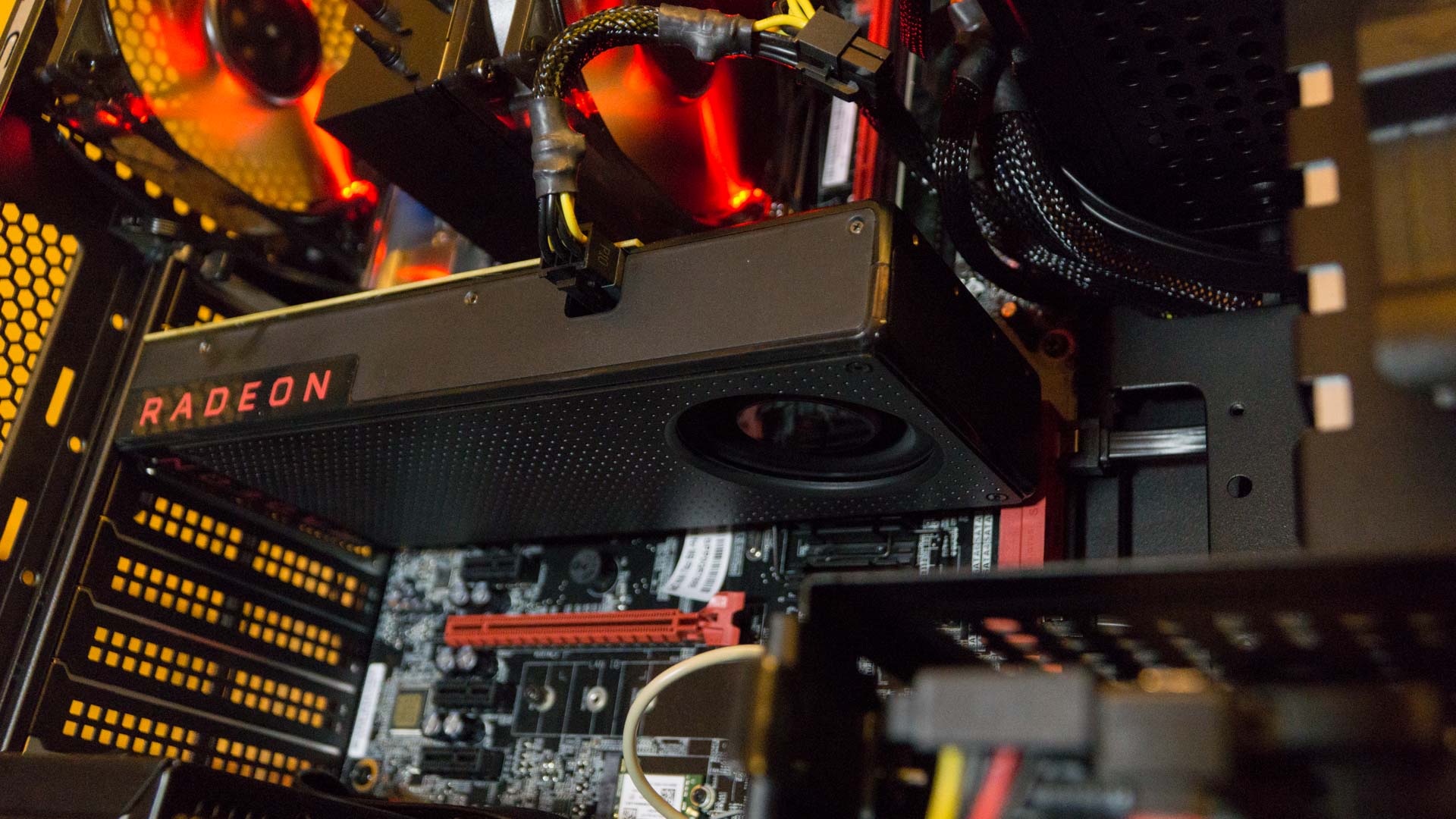Making power pay: how AMD's Polaris graphics cards could save gamers money
It's all about energy efficiency

PC gaming isn't cheap. First, you have to buy powerful hardware if you want to play the best PC games, then there's the cost of AAA games themselves. As we all know, Steam sales only go so far.
Most people barely stop to think about the ongoing electricity cost of running a typical gaming PC, which, according to a 2015 report by the Lawrence Berkeley National Laboratory, can consume as much power as three refrigerators in a single year.
AMD has doubled down on the energy efficiency of its GPUs and APUs in recent years. In 2014, it launched an initiative to reduce carbon emissions and improve energy efficiency of its A-Series APUs.
In its new Carbon Footprint Study, the company now claims that its Polaris-based Radeon RX 400 series (including the Radeon RX 480) can achieve up to 2.8 times the energy efficiency of its previous generation Radeon R9 390 GPU.
Level up
The suggestion, then, is that upgrading from AMD's older card to one of its newer ones can save you a wad of cash. Approximately 888 kWh is saved per year by making the switch, according to AMD, which it translates to around $112/£85/AUS$147 over three years. That may not sound like much, but if you upgrade your card every three years, it's a chunk shaved from the cost of the next one while helping out the planet.
Robert Hallock, Technical Manager at AMD, says that the energy efficiency savings were made through a combination of architectural improvements to Polaris and a move to the 14nm FinFET manufacturing process, one of the biggest generational leaps the industry has seen. TechRadar spoke to Hallock to find out more.
TechRadar: Why did AMD conduct the Carbon Footprint study?
Get the best Black Friday deals direct to your inbox, plus news, reviews, and more.
Sign up to be the first to know about unmissable Black Friday deals on top tech, plus get all your favorite TechRadar content.
Robert Hallock: We did the study because, when you say that you've improved performance-per-watt of your product, it's jargon and slang that most people don't understand. We wanted to put a human face on the power savings of Polaris and ask the question of what it actually means to upgrade from a card that you had two years ago to a Polaris architecture-based one. It can have implications for your power bill and the environment.
What savings did you uncover?
In the paper, we mapped it out to dollars, kilowatt-hours and carbon dioxide saved per year. If you add up all of the savings from the paper, we could offset emissions from 500,000 automobiles in the US, which is equivalent to 88 million trees. There are 50 million dollars of energy savings to be made each year, and these are "up to" figures depending on how many people buy an RX 480. It's a much better way to describe power efficiency and savings than talking about performance-per-watt.

How were energy efficiency gains made by moving to Polaris?
It gave us up to 2.8 times the performance per every watt of power versus a few years ago. Around 1.7 of that is simply switching to the 14nm FinFET manufacturing process, and the other 1.1 is from AMD-built circuits and decisions that we specifically made to create this chip.
What is the significance of moving to 14nm?
It's been five years since the last major jump in the manufacturing process happened. The last one was 28nm in early 2012. That half a decade in-between is the longest period between two process nodes for graphics cards. The industry had to figure out clever ways of getting increased performance and lower power out of the same manufacturing techniques. It's been a long time coming and has allowed us to be flexible and efficient with our designs.
The report says that "Dennard Scaling," or the improvements gained by moving to a new architecture, is slowing down. Why is this?
There are any number of billions of transistors inside each and every graphics card or processor. As we move to smaller transistor sizes, the amount of physical area space in a chip that you can save on smaller nodes diminishes over time. It's not necessarily the transistor size that's taking up space any more; it's the spaces in-between them. You can only make each transistor so small before individual electrons can pop out into the environment, which is called electron leakage.

While running electrons can increase heat, it can reduce reliability, and diminishing returns becomes the name of the game. That's why the industry is collectively looking at the next process node, and the one after that, to figure out what makes sense. We have to ask what the technique is to build the next chip smaller, because there will be a point where something different must be done.
Polaris arranges compute units in a parallel formation, rather than linear. What's the advantage of that?
That's specific to Polaris. One of the advantages of having smaller transistors is that you can fit more circuitry into the same amount of space. It may open up room for a cache, buffer or new instruction that you didn't previously have room for.
Every transistor costs a certain amount of money, and the bigger you make your chip, the more expensive it becomes. That scaling is not linear in nature, so you have to make choices about what to put into the chip. If we can fit more into the exact same space today than you could yesterday, then we can extract more performance for every compute unit by improving their fundamental design.
How difficult is it to make gamers more aware of how much energy graphics cards and other components in gaming PCs consume?
I think we've seen a pretty stark uptick in the average gamer's interest in power efficiency, especially in the last three years. They're starting to understand the cost in two ways: the power bill, and in terms of fan RPMs that have to be used to cool a high-power, hot-running graphics card.
It's relatively easy to do that, but users are starting to appreciate the engineering elegance of a graphics card that can do more with less. Talking to gamers daily inside and outside of work, I see more interest, broadly, in power efficiency as a metric and it's something that's widely discussed.
The United Nations has called for a global reduction in greenhouse gas emissions. Are there any regulatory incentives that penalize or encourage AMD when it comes to targets?
Currently there are none that I am aware of, although there are awards and whatnot that encourage us. The fun thing about the silicon industry is that doing more with less power is the natural evolution of things, at least when it comes to energy efficiency.
As we switch to smaller manufacturing nodes, like we did with Polaris moving to 14nm Fin FET, AMD investigated and built new circuit designs that are responsible for around half of the improved power efficiency for the Polaris architecture. We also work with several labs on that – especially in North America – feed into regulatory agencies.
So, it's in the whole silicon industry's interest to make those energy efficiency gains?
Yes, because having cooler running, lower power and lower wattage parts makes it easier to build the rest of the product around it; you don't need as complicated a cooler or as expensive a fan; or voltage regulators to control higher power; it just simplifies the whole system – so there's an economic incentive there, too.
Where will energy efficiency gains come from when it comes to Polaris' successor?
I can't speculate on future products, and 14nm is very new. It will be around for a while, so it seems to me that emphasizing circuit design and physical layout of the chip will be the key factors going forward.
This article is part of TechRadar's Silicon Week. The world inside of our machines is changing more rapidly than ever, so we're looking to explore everything CPUs, GPUs and all other forms of the most precious metal in computing.
Most Popular




